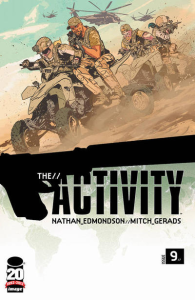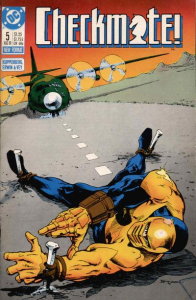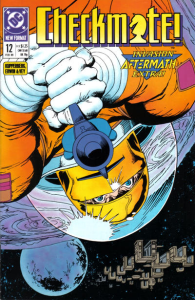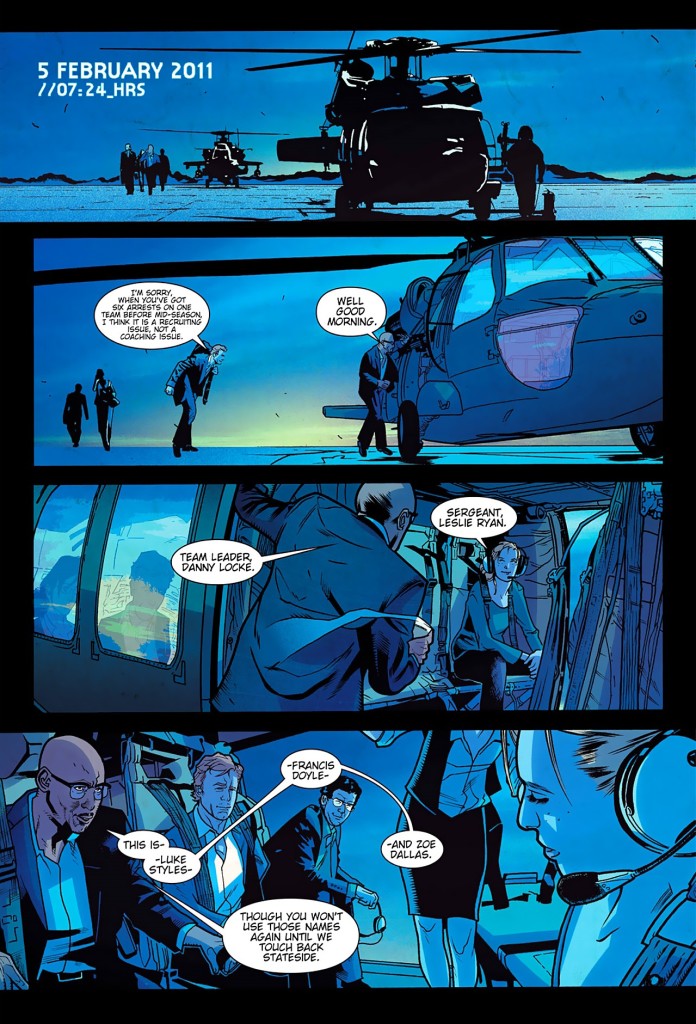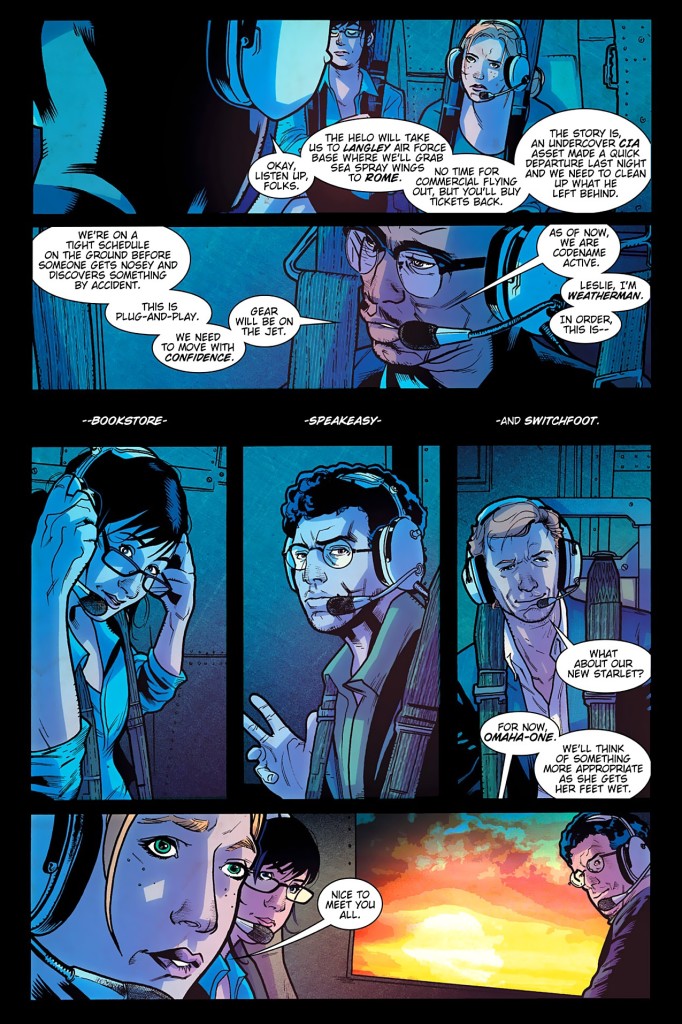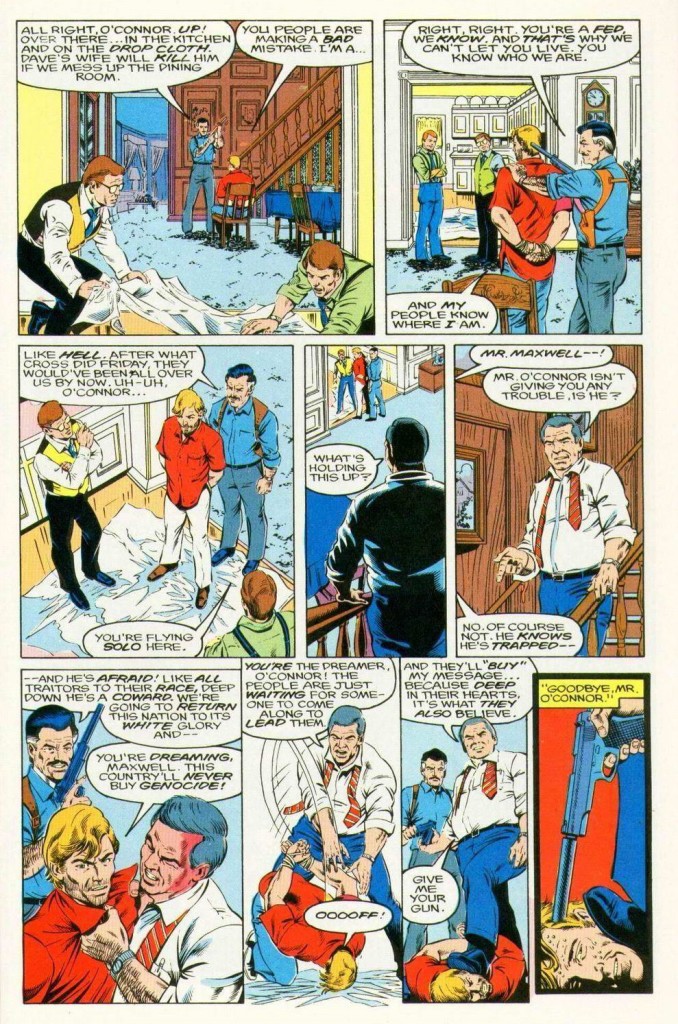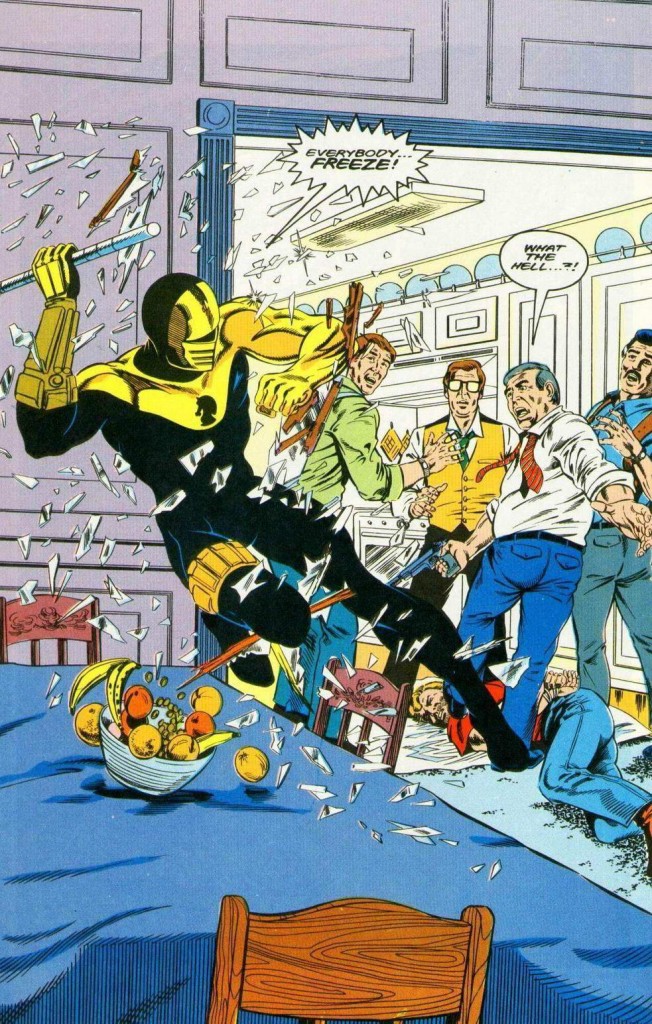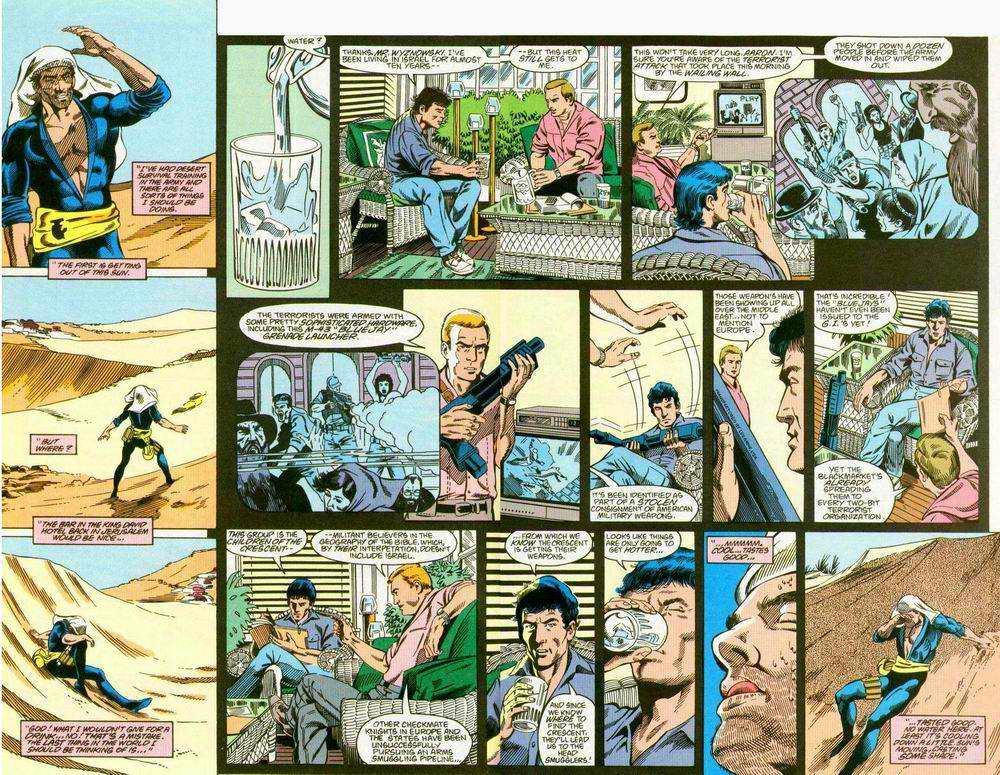As you’ve probably noticed by now, this month at Gotham Calling is all about spy fiction.
The thing about spy yarns is that the tradecraft can be the real star of the story. Even when the leads aren’t particularly likable or you don’t fully support their actions, it can be satisfying enough to watch a complex operation unfold, to figure out who is playing whom, to appreciate the strategies and techniques of professionals, whether they’re German agents in WWII (like in The Eagle Has Landed) or the kind of tough American spooks David Mamet wrote about in Ronin, Spartan, and The Unit.
While a handful of suspenseful sequences, fake IDs, and double-crosses may suffice to carve out an entertaining thriller, however, some of the best works in the genre are the ones that reflect – intentionally or not – the moral ambiguity of espionage by drawing on current political issues to flesh out their narratives. This is usually the case, for example, with series about top secret government agencies that carry out special missions to serve their country’s interests.
THE ACTIVITY
Nathan Edmondson’s and Mitch Gerads’ The Activity – which came out from 2011 to 2014 – followed a team of ‘problem solvers,’ i.e. a direct action unit within the ISA (Intelligence Support Activity) specialized in cleaning up what other outfits left behind after their missions and, occasionally, fixing their mistakes. Backed by bleeding edge technology, these operatives undertook assignments all over the world, from Mexico City to Amsterdam, from Thai prison cells to the Congolese jungle.
Although there is a military slant to several stories, most of The Activity goes for understated rather than explosive scenes. The tone is dry and realistic, with both Edmondson and Gerads clearly putting a lot of research into the comic – indeed, much like the ISA operatives in the series, the creators seem to have thoroughly thought out and carefully put together every sequence. Check out the nuanced color work on the pages above (Gerads did the coloring as well as the pencils and inks, with Kyle Latino and Jordan Gibson credited as ‘color assistants’).
The series has an episodic structure, with each issue focusing on a specific assignment, but it plays around with the format, so that it doesn’t become too repetitive. Apart from the changing goals and settings, stories zoom in on different stages of the agents’ work – its preparation, execution, or aftermath. For example, the third issue, ‘The Long Ride Home,’ takes place immediately after a failed mission in Afghanistan, with the characters comparing attitudes towards their job during their flight back (and discretely setting up future plot points).
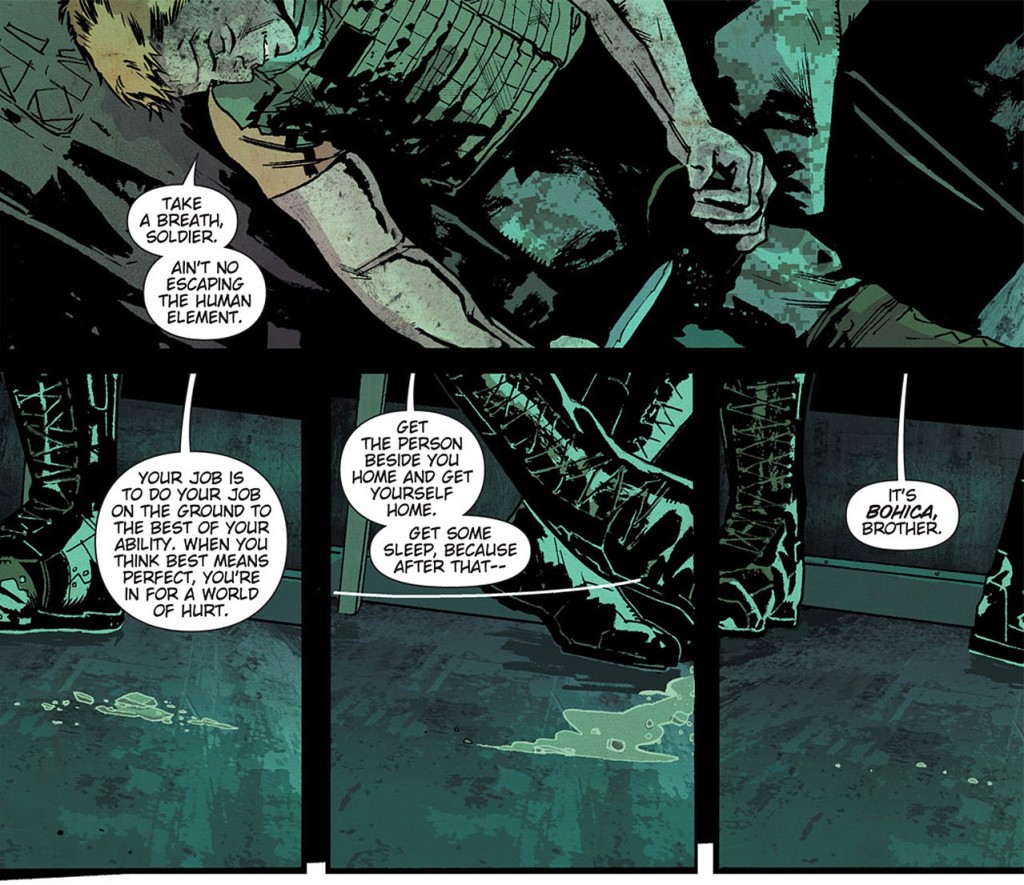 You can tell Nathan Edmondson has a ball crafting the dialogue out of technical lingo and acronyms – there is even a glossary at the end of this issue (‘BOHICA: Bend Over Here It Comes Again’). The result is a smart comic with plenty of enjoyable banter, subtle characterization, and exciting spies-on-a-mission thrillers.
You can tell Nathan Edmondson has a ball crafting the dialogue out of technical lingo and acronyms – there is even a glossary at the end of this issue (‘BOHICA: Bend Over Here It Comes Again’). The result is a smart comic with plenty of enjoyable banter, subtle characterization, and exciting spies-on-a-mission thrillers.
That said, I can see how some readers may find The Activity‘s Kathryn Bigelow-ish approach off-putting, as the series presents extrajudicial killings and torture with the same matter-of-factness it presents the many debriefing meetings (even if issue #10, ‘Out with the Trash,’ does powerfully address the question of local collateral damage). Me, I think this refusal to moralize works to the comic’s advantage, leaving it to each of us to engage with the agents’ methods on our own terms.
CHECKMATE!
While The Activity generally refrains from exploring the political implications of the characters’ actions, other series are more openly cynical about black ops, inviting readers to simultaneously root for the protagonists *and* question the ethics of what they are doing or who they are working for. This has been the high concept behind several team books (basically, every other WildStorm title in the ‘90s), but it was particularly prominent in comics of the late 1980s, in the aftermath of the Iran-Contra scandal and at a time when relations with the Soviet Union were improving.
It was during this period that writer Paul Kupperberg, having concluded – in the grittiest way possible – his run on the fucked up crime comic Vigilante, turned his sight on the world of espionage. At first, he combined international intrigue and superheroics in the nutzo mini-series Peacemaker (where the titular anti-hero tried to prevent Dr. Tzin-Tzin from toppling the USSR while being haunted by a projection of his dead Nazi father, who insulted him all the time) and the one-shot The Doom Patrol and Suicide Squad Special (where agents from both sides of the Iron Curtain went to Nicaragua after the jingoistic superhero Hawk got captured by the Sandinistas). Kupperberg then decided to do a more realistic take on the genre while building on the intricate intelligence community he had been developing, co-creating with artist Steve Erwin the cult series Checkmate! (with some costume designs by John Byrne).
Checkmate! followed a shadowy government agency organized around chess-related codenames (King, Bishops, Knights, etc). In true Reagan era spirit, the organization ran covert operations that sidestepped the judicial rulebook, the ends justifying the means. After a sneaky backdoor pilot in Action Comics #598, the series debuted in April 1988 with a taut three-part yarn about a secessionist plot by the American Supremacist Party (back when this kind of movement was an obvious villain, not part of the accepted White House inner circle). Later missions targeted all kinds of topical threats, from drug deals to terrorism and money counterfeit, with the comic making a point of showing us not only the field work, but also the fierce arguments and disputes taking place at the higher levels.
As you can see in the sequence above, Steve Erwin’s clean, naturalistic art, with its precise sense of geography, helped nail the down-to-earth feel of the comic while smoothly flowing from cloistered, wordy panels into knockout splashes. I really like Erwin’s double-page compositions in ‘Heat’ (Checkmate! #6), a story that keeps shifting between a Knight stuck in the Middle Eastern desert and flashbacks to his earlier operation against a smuggling network:
The protagonists kept changing from arc to arc, the focus rotating between different operatives throughout the series. The comic did suffer from too many bland agents and villains, but fortunately the supporting cast also included interesting characters that Kupperberg had introduced in Vigilante – like Checkmate’s King, Harry Stein, and the rogue Black Thorn – as well as characters from other series, like the Bishop Harvey Bullock (originally from the Batman books) and the Queen Amanda Waller (from Suicide Squad). This was a treat for DC fans, even if at first the series worked largely on its own, telling nail-biting, self-contained tales.
Indeed, like Gotham Central and Mike Grell’s Green Arrow, this was a comic that was firmly set in DC continuity yet had little interest in the kookier, supernatural side of the DC Universe. In contrast to Greg Rucka’s (excellent) take on Checkmate years later, Paul Kupperberg’s scripts and Steve Erwin’s pencils initially treated the series as a proper spy thriller rather than as a superhero book with spy elements in it. They even managed to pull off a trio of fabulous tie-ins with the mega-crossover Invasion that still felt like grounded action stories by never focusing on (or fully showing) the aliens who were attacking Earth at the time.
After a solid first year, however, Kupperberg gradually abandoned his pretension to realism, bringing in the deranged Peacemaker as a recurring character (‘I love peace so much I’m willing to kill for it!’). There was also the obligatory crossover with other, more outlandish DC spy books – the 11-part ‘The Janus Directive,’ which ran across Checkmate!, Suicide Squad, Manhunter, Firestorm, and Captain Atom, pitting the US government’s various secret agencies against each other. This was a fun event, which not only ripped off the climax of Moonraker – the most amusingly over-the-top 007 film – but also included a face-off between Black Thorn and Captain Boomerang where they argued about who was the best Bond (she was into Dalton). By the final issues – with rougher art, by Gabriel Morrissette – Checkmate! had ventured into shamelessly schlocky territory, brimming with ninjas and cyborgs!
NEXT: WWI spy comics.

